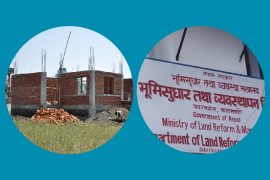In 2017, the Nepal Rastra Bank (NRB) issued a directive limiting the credit offered for buying residential houses in Kathmandu to 50 percent of the property market value. This was from the earlier credit offered at 60 percent of the property value. However, this did not affect loan to value ratio for credit of building or buying houses outside Kathmandu Valley. This remained at 60 percent of the property market value.
The NRB referred home loans as credit extended by financial institutions and banks for buying property for commercial (renting) or residential purposes. Therefore, the income source of a borrower should be used to determine the extension of credit. The NRB raised home loans from RS 10 million to a maximum of RS 15 million. The new directive also revised the loan to value ratio for credit offered to 40 percent for purchasing real estate in Kathmandu. Similarly, credit for purchasing real estate outside the valley remained at 50 percent.
The NRB also established a policy through the 2017/2018 Monetary Policy to discourage expansion of real estate in the valley. This was aimed at ensuring that such development spread to other parts of the country. The NRB allowed financial institutions and banks to extend credit in auto loans up to 65 percent of their value in the market. As such, buyers are required to make 35 percent down payment of the total market value of their cars. Meanwhile, for electric cars one is required to make 20 percent down payment of the total market value.

In the priority sectors, commercial banks must extend 10% to the agricultural sector, 5% to tourism and 5% to hydro-electricity. The remaining 5% to other sectors like small-medium & export-oriented enterprises, cement & garment factories and pharmaceutical companies.







